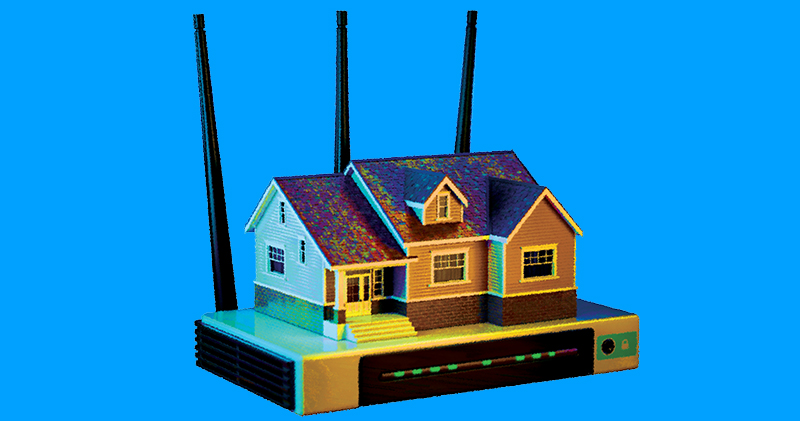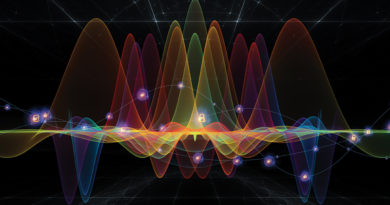Six Good Things To Know About Wi-Fi 6E
By Leslie Ellis
Something BIG happened in our Wi-Fi lives since our last edition. Really BIG!
In mid-April, as the world settled into staying home, the FCC made good on a longtime aspiration by its chairman, Ajit Pai, to massively increase the amount of unlicensed spectrum we use for Wi-Fi. It’s a generous (1200 MHz / 1.2 GHz) swath of wireless connectivity, in the attractive “mid-band” region between 5925 MHz and 7125 MHz. In everyday talk, it goes by the 6 GHz band. It matters as a third place, in addition to 2.4 GHz and 5 GHz, for Wi-Fi connectivity.
This development also involves a Wi-Fi 6 rebrand that has little to do with 6 GHz, and a Wi-Fi 6E variation with substantial nuance. In short, there’s a lot to unpack. What follows is my take on six good things to know about Wi-Fi 6, 6E, and 6 GHz. Here goes:
- It’s the biggest thing to happen in Wi-Fi in a generation
The day after Pai announced the 1.2 GHz of unlicensed spectrum for Wi-Fi, he and a blue chip roster of wireless industry aficionados (and around 2,000 viewers) participated in a four-hour online event called “Wi-Fi Now Special Event.”
Throughout the event, praise flowed freely: “A factor of five increase.” “A dramatic increase that pushes the boundaries of the possible.” “Unquestionably a big deal for broadband providers.” “Biggest thing to happen in Wi-Fi in two decades.”
Think about when you entered the industry we used to call “cable” — during which bandwidth upgrade? There was the shift from 300-450 MHz, then from 450-550 MHz, then from 550-750 MHz, then to 860 MHz, then (and in some cases) 1 GHz. Those happened between the early 1980s and now. This is a spectral allocation that surpasses all of those, in one fell swoop, and reasonably immediately. It swamps the spectral allocation for 2.4 GHz Wi-Fi (70 MHz) more than doubles that of 5 GHz Wi-Fi (480 MHz, of which about 160 MHz is really usable).
Also notable: This happened as the result of a unanimous, 5-0 vote by the FCC’s commissioners. Proof that everyone recognizes the value of Wi-Fi.
- Wi-Fi 6 and 6E are quite possibly one of the more confusing re-brands of all time
This is where it gets a little weird: Wi-Fi 6 is actually an attempt to reduce consumer confusion about traditional Wi-Fi naming conventions — otherwise known as “the 802.11s.” Specifically, the term “Wi-Fi 6” is synonymous with 802.11ax. Wi-Fi 6E is Wi-Fi 6 plus the ability to work within the 6 GHz zone — so, the “E” is for “Extended.” Not to mention the MU-MIMO!
- It’s for indoor use only, and only 6E devices will work in the 6 GHz band
To sidestep potential and real issues involving incumbents operating within the 6 GHz band, the FCC’s spectral allocation is for indoor use only. It did also unleash up to 850 MHz of sub-bands for indoor and outdoor use, using a technique called “automatic frequency coordination.” The role of “AFC” is to make newly connecting devices check a database, to make sure they don’t inadvertently step on any incumbent services in the band. Requiring AFC for indoor APs where it is not needed would add about $100.
Also, it’s not like we’re going to be able to point our existing, non-6E devices at that 6 GHz Wi-Fi zone, and get connectivity. Nope! That new 1.2 GHz of spectrum will only be accessible by devices that are 6E-capable. This means the band will seriously favor early adopters, just like 5 GHz did when it was the new thing, relative to 2.4 GHz.
- Wi-Fi 6E brings wider channels, which bring faster speeds
When you start getting into the details of 6E, you’ll pretty quickly run into talk about bonded 160 MHz channel widths, as an increase over the 80 MHz + 80 MHz bonds of Wi-Fi 6. This is why it’s also good that the FCC’s 1.2 GHz spectral allocation involves contiguous channels, because things work better when they’re a) big and b) contiguous. The upshot is that 6E, in theory, will blast 2 Gbps of throughput, with sub-2 millisecond latency. This rockets to 5+ Gbps with Wi-Fi 7 (and 320 MHz channel usage.) Those speeds and latencies favor bandwidth-hungry services that thrive on low latency, like VR and AR.
Another appreciably nerdy part of the tech story behind Wi-Fi 6E is that it uses a type of modulation also used in DOCSIS 3.1: OFDM/A, which stands for orthogonal frequency division multiplexing/multiple access. In a huge oversimplification, OFDM/A is a more efficient way to slice what moves inside wide channels. Plus, anytime something new arrives that uses what you’re already using — bonus!
- Some position 6E as a 5G killer, but it’s really not
It’s easy and sometimes even a little fun to take shots at the over-fed hype machine that is 5G. When it comes to 5G and 6E, though, a useful way to look at it is this: Your phone/tablet will connect over mobile, when you’re out. Maybe it’s connecting on 4G, or LTE, or 5G. Doesn’t matter: It’ll switch over to Wi-Fi when you’re back in your home or work zone. It’s a case of one accelerating network (5G/carrier) handing off to another accelerating network (Wi-Fi 6/6E). Everybody wins.
- It’s going to happen pretty quickly
Any question of when something in technology is going to happen necessarily starts with silicon: the chips used in Wi-Fi access points, routers, gateways, and repeaters. They’re expected by the 2020 holiday season. The 6 GHz spectrum itself was to go live at the end of July. This means that we may be surfing on 6 GHz as soon as next summer, but definitely by later next year and into 2022. And yes, this does mean that when equipment becomes available, it will likely bear marketing tags like “tri-band,” to cover 2.4/5/6 GHz. It’s not quite a tri-corder, but it’s still pretty nerdy…
One more thing about where the U.S. is going with Wi-Fi: This all happened because Chairman Pai and the FCC team locked onto the engineering community to solve what needed to be solved for the contiguous 1.2 GHz that is headed our way. Nice job, FCC people. Also, Wi-Fi turns 21 this year. Someone should probably buy it a beer!
 Leslie Ellis,
Leslie Ellis,
President,
Ellis Edits Inc.
leslie@ellisedits.com
Leslie Ellis is a tech writer focused on explaining complex engineering stuff for people who have less of a natural interest than engineers. She’s perhaps best known (until now!) for her long-running weekly column in Multichannel News called “Translation Please.” She’s written two broadband dictionaries, one field guide to broadband, and is a behind-the-scenes tech translator for domestic and global service providers, networks, and suppliers. She’s served as board member of the Rocky Mountain chapter of the SCTE since 2015, and is a 2019 Cable Hall of Fame inductee.
Shutterstock




